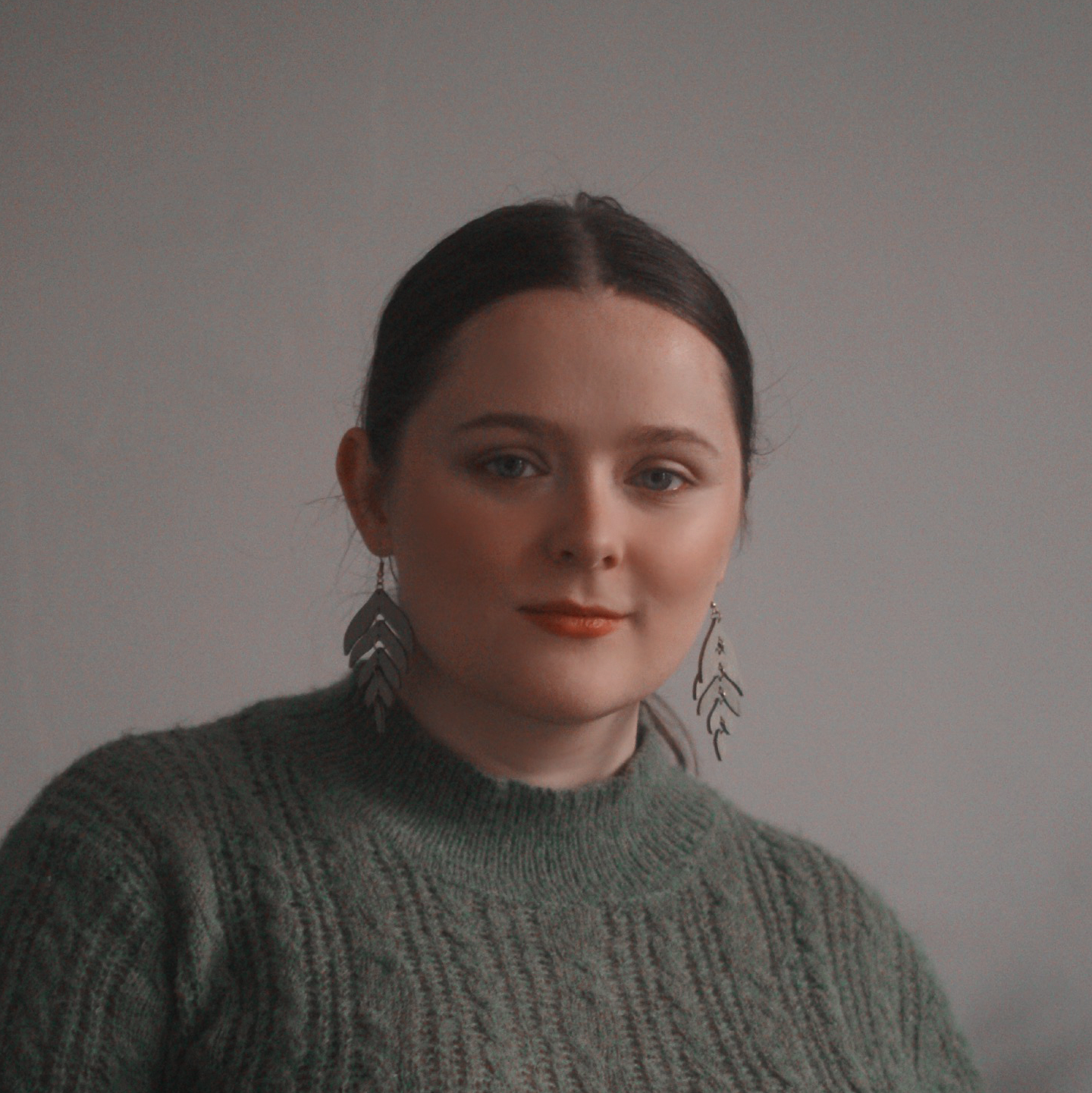
Although I’ve spent most of my creative life as a filmmaker, I’ve always (quietly) dabbled in novel-writing. The privacy of a fiction manuscript allows me to be myself – without the pressure of a film crew’s eyes on me, when a scene needs to be rewritten urgently and the daylight is fading.
I’d take my lunch break away from the film set and find somewhere more secluded, either to disappear into a dark literary novel (my favourites!) or scribble down ideas or sentences for the book project I was secretly working on.
I finally felt I had permission to come out as a novelist early in 2023, when that book project – The Lamb, about two women cannibals – was acquired by W&N Books in a six-way auction and was pre-empted by Harper in the US.
Yet all the time the book was out on submission, and while I was navigating the editorial process, both agents’ and editors’ comments about my writing were unanimous: ‘You have such a cinematic visual voice!’ My scriptwriting experience had clearly seeped into my novel. And while I worked on my novel edits and started on my next book, it was the world of film-making that guided me through this new literary terrain. Those all-important lessons were never absent from my approach. If you think they might be useful for you too, here’s how the toolkit I used as a screenwriter helped me create a page-turning literary novel.
1. LET YOUR CHARACTERS KEEP SECRETS
Actors have a great saying, ‘Acting is reacting’, meaning that the best performances often come from subtle reactions that aren’t necessarily scripted. In those intimate moments we can learn a great deal about the characters and the story. In novels too, characters can quietly reflect on the reactions of other characters, which helps the reader learn about them too.
Filmmakers rarely use inner monologues to convey the thoughts of their characters, as happens routinely in many novels. In film, you need to convey a character’s inner conflicts through performance, without stating them overtly in speech.
The nuances of the performance evolve from a combination of things: subtle directions in the screenplay, conversations with the actor, the actor’s own research and observations. Those ideas are further developed in director-led workshops, in which the actors play with the script, experiment and explore, pose and answer questions about the evolution of the characters and story.
While writing The Lamb, my screenwriting instincts pushed me to explore each character’s psychology through the subtle nuances of their body language – and not to rely on their internal monologues to convey the story and their reactions to it. I put myself back into my director/screenwriter shoes to tease out those details, just as I’d encourage actors during our workshops.
Even when I was writing inner monologues in the book, the lesson I took from my screenwriting was to let my characters keep some things secret and hold back their opinions. I found that my prose worked best when I trusted the reader to make sense of the story by noticing what is left unspoken. The screenwriter wants to invite the reader in with this promise: the closer you look, the more you will learn.
2. SHORTER IS SWEETER
I’ve often wondered why I tend to underwrite my prose, while enviously watching my novelist friends produce seemingly endless pages of text. But I’ve recently realised why. At around 20,000 words on average, screenplays are a lot shorter than novel manuscripts.
In a film every new decision, every character, piece of costume and lighting choice, can cost a jaw-dropping amount of money. This means that every moment of every scene must earn its right to exist. Because there are only 90 minutes or so in which to tell the story, the narrative must be concise and economic. There’s no room for a scene to be there in service of texture or atmosphere alone.
This frame of mind, applied to novel structure, lends itself to pace and page-turning. My screenwriting instincts wouldn’t let me indulge in a single redundant scene or sentence. Everything was poked and prodded, considered and questioned, to discern whether it was valuable to my story – or excess fat to be trimmed.
When keeping things tight, I tend to keep in mind three principles. First, that every scene should achieve three things, namely: further the plot, add tone, or explore the theme. Second, that every scene should carry the message of the book wrapped within it in some way. Third, that I should always check whether several scenes that are serving a similar purpose can be combined into one.
3. THE IMAGINATION IS VISUAL
In film you can show a close-up of someone’s fingernails: how they’re bitten at and uneven along their ridges, red skin flaking near the nail beds, because the character is anxious about a school test or keeping a terrible secret. The art of visual storytelling is suggestive. You can plant theories and suspicions in the audience with a single three-second frame of those fingernails.
I asked myself: ‘If this was a film, where would I use close-ups? Where would I use wides? Medium shots?’ Of course, writing a novel manuscript is not the same as writing a screenplay, so I tried to craft the equivalent qualities into the story. Where I pictured a wide shot, I might write about vast expanses or abyssal landscapes to imply loneliness or fear. Where a character felt anxious or overwhelmed, I’d write scenes that felt tight, intrusive and close-up.
I focused a lot on mise-en-scène, to inject the equivalent of production design. As an example: what can a chair absent of its owner tell us about a story? What object does a character look at, and does their gaze linger? Does their face soften at a memory, or do their eyes narrow because it brings back something dark? Instead of telling the reader exactly why they linger or what they’re thinking about overtly, I use a visual reference to invite the reader to infer what’s going on, to analyse why a character’s nails are bitten and scabby.
4. MAKE YOUR CHARACTERS ACTIVE
In film the characters are on show. It’s up to the screenwriter to make sure they always have something to do – otherwise you can find yourself on set with 30 or 40 people watching, and your lead actor drifting vaguely about or just standing there. To avoid this, I always try to give both actors and fictional characters something to occupy them – both physically and emotionally.
Physically, I give the character an activity – a tic or habitual fidget, or a chore to do – so there is some physical action to help drive the scene forwards. Emotionally, too, every character needs to have a conscious or subconscious goal they want to achieve in the scene, that will influence their actions.
5. OUTLINE, OUTLINE, OUTLINE
Everything is planned in film, every little thing, down to the colour of a lampshade in the background. And the script is no exception. Before you’re allowed to write the first word of the screenplay, you must draft a treatment document (aka a detailed outline). And then redraft it. And rework the redraft, nipping and tucking and amending it to within an inch of its life. And you keep working on this document until your producer or commissioner feels it’s good enough to turn into an actual screenplay.
When writing my novel, I used the same structure and processes as I do with my film outlines. This approach is not for everyone, but if you think it might be useful for you, here’s the sequence:
I always start with three sentences. One describes an image (or frame) for the beginning; one describes an image for the middle; and one describes an image for the end. This sequence is intended to capture not only the plot, but also the emotional journey of my characters. This is a technique adopted from Hayao Miyazaki, who is known to develop his stories from crafting storyboards instead of scripts – and often goes into production on his animated films without a finished script at all.
Next, I break those three sentences down into the classic Save The Cat structure, filling in the gaps and writing down any immediate images that occur to me. From there, I build and embellish, filling in the gaps, redrafting scene outlines, adding dialogue and images. This stage takes weeks and months. It’s creative and at times messy, chaotic and unorganised.
The resulting document is the recipe for my novel manuscripts as well as my films – a place where I can toy with ingredients and experiment with utensils until it feels right. The outline is raw and ever evolving, but at some point I sense when it’s ready to jump to a first draft.
Moving from screenplay to fiction has been a fascinating process, but these five tools stayed firmly rooted in my writing process throughout.
TRY THIS
Save The Cat is the classic guide to screenwriting, by Blake Snyder. His STC structure takes the beginning, middle and end of a story and divides it into 15 essential story ‘beats’. Each beat has a different function that pushes the story and characters forward within the plot. The 15 stages, along with their approximate position in the manuscript, or running time in the film, are listed below (where 0% is the beginning and 100% is the end).
Act 1
◗ Opening Image: 0-1%
◗ Theme Stated: 5% (Audience discovers the moral of the story)
◗ Set-up: 1-10% (Introduction to hero’s goals and situation)
◗ Catalyst: 10% (Event that upsets things and starts the hero on their journey)
◗ Debate: 10-20% (Ambivalence! Reasons for and against particular actions)
Act 2
◗ Break Into Two: 20% (Main action starts, marking end of Act 1)
◗ B Story: 22% (Start of subplot to maintain interest while main plot unfolds, often a love story)
◗ Fun and Games: 20-50% (Exploring the USP of the setting and story)
◗ Midpoint: 50% (Fun stops and things get serious)
◗ Bad Guys Close In: 50-75% (Characters and events escalate to frustrate the hero)
◗ All is Lost: 75% (It looks like there’s no solution)
◗ Dark Night of the Soul: 75-80% (Set-up for the hero’s final desperate effort)
Act 3
◗ Break Into Three: 80% (Concluding action starts, marking end of Act 2)
◗ Finale: 80-99% (Countervailing forces are defeated)
◗ Final Image: 99-100%
The Lamb is available to buy now.
This article was first published in Issue 101 of Mslexia.

